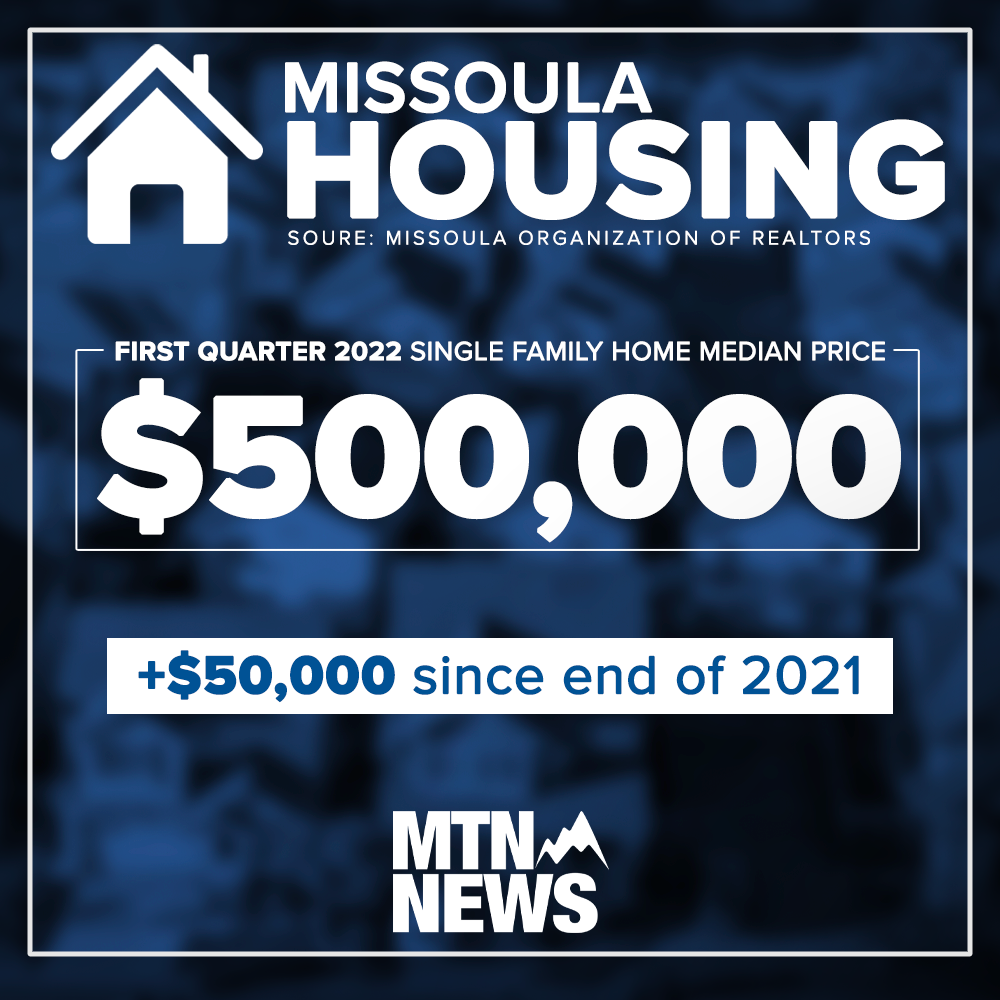MISSOULA - Is Missoula building enough townhomes? What the about plunge in the affordability index? Should we prioritize the approval of some projects?
Those are just a few of the dozens of questions swirling around the release of the Missoula Organization of Realtors (MOR) latest annual report, statistics that show the median home price hitting highs that would have been unthinkable just two years ago.
Before the ink could even dry on the 2022 Five Valleys Housing Report there was more sobering news.
Missoula's median home price, already climbing at $315,000 at the start of the pandemic had soared to $450,000 by December and climbed another $50,000 to $500,000 in the first quarter. MOR's leadership called the news "grim" and said it puts even more emphasis on finding solutions to the crisis.
"We really need everybody at the table. And if you go to community meetings, we are, you know Realtors, builders and city and county developers, we're all there," MOR President Mandy Snook said after Tuesday's presentation of the report. "You know there are plans to put a lot of units into the market, but the timeline just isn't adequate for what we need."

"Not just locally," emphasized MOR CEO Jim Bachand. "I think this conversation was about local data, but state legislators. I mean, we need to follow up on state legislators to figure out ways to streamline state legislation to speed up the process for building."
Bachand told the audience a lot of the focus is on speeding up the development, or re-development of properties. And finding the right mix of new housing, both for ownership, and rental. Maybe prioritizing construction.
"That just came up last week. I think there's going to be some continued dialogue on that. There's no easy answer to that. Should I pick you over you? That's really hard to determine."
But Bechand told MTN News afterward it's a question that needs to be addressed.

"Do you prioritize the multi-family unit or over a single-family unit? And how do you make that decision and is that up to the city? The county? That's a hard thing to do. When we know we're in a crisis on housing."
With both the Affordability Index and the "absorption rate", the inventory of homes to sell, plunging, there are questions on what to build.
"And then of course, what's happening in the city? Well, we're building multifamily. That's where the growth is," IMEG Senior Land Use Planner Paul Forsting noted. "Why is that the case? Well, traditionally multifamily has been the easiest thing to get built in the city of Missoula, where single-family development is very difficult to get approved."

Half a dozen years ago, there was some dispute over the trend to build homes costing $450,000 or more. Yet today, those prices look like a bargain. Ironically, it points to another question. If you live in a home that's now doubled in value, would you use that equity to trade up, freeing up your home to be sold to someone else?
MOR Vice President Brint Wahlberg says if inventory in the $750,000 range opened up, some people might elect to make such a move.
"If people have more options to move up and we're able to sell their current property and make offers and successfully purchase either new construction or existing resales at higher price points, it's going to allow a lot more market churn, where people can sell, get into a new place. And then of course their home would presumably go to somebody else and it would increase the access for homeownership.

Bachand doesn't see a silver bullet.
"There's not going to be one thing that solves this crisis. It's a toolbox of items that we got to put a whole bunch of toolbox things together in which then we have a bigger solution. It's going to take all of us coming together. Finger-pointing and trying to figure out who's responsible isn't as important as what we can do to solve the problem."
A look at residential building permits — what's required for the construction or renovation of a new or existing building — shows that in 2021, the permits increased 141.8% in the city but declined 3% in Missoula County.

Multi-family units in the city — such as duplexes or apartment complexes jumped by nearly 244% but single-family permits — a home for one household — dropped for a second year by 2%. But out in the county, single-family permits rose by almost 12%.
You can track the statistics on MOR's website.



